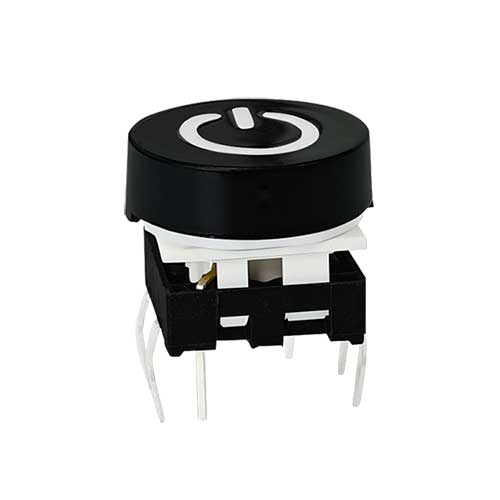PCB Tactile Switch
The PCB Tactile Switch is a versatile switch that provides tactile feedback and visual indication of its state.
The primary advantage of illuminated LED power tact switches is the added tactile feedback mechanism with an integrated LED lighting system. It provides an intuitive user experience as the tactile feedback and visual indication together make the switch activation process more user-friendly. Additionally, since the switch is a low-power device, it is very efficient and can be integrated into circuits that run on batteries or other power sources with minimal power consumption.
Illuminated LED power tact switches represent a significant advancement in switch technology, offering enhanced functionality and visual indication for various applications. These switches combine the tactile feedback of traditional tact switches with the visual indication provided by integrated LEDs, making them suitable for a wide range of user interfaces, control panels, and electronic devices.
A PCB tactile switch with LED is a type of switch that combines the tactile feedback of a traditional momentary switch with the added benefit of an integrated LED light. This combination provides both physical confirmation that the button has been pressed (via tactile feedback) and a visual indication of the switch's state (via the LED light). These switches are typically mounted directly onto a printed circuit board (PCB), making them highly versatile and compact. Their application spans a wide range of electronic devices, from consumer electronics to industrial equipment.
What Is a PCB Tactile Switch with LED?
A PCB tactile switch with LED is a small, pressable switch designed to be soldered onto a printed circuit board. The switch itself provides momentary action, meaning it only stays active while pressed and resets when released. The tactile mechanism ensures that users feel a distinct click or resistance when the button is pressed, confirming that their action has been registered.
The integrated LED within the switch provides visual feedback, lighting up to indicate whether the switch is in the on or off position, or sometimes to indicate specific status signals (such as warnings or errors). The LED light typically illuminates in different colors, like red, green, or blue, depending on the design and function of the system.
Key Features of PCB Tactile Switches with LED
1. Tactile Feedback
The defining feature of a tactile switch is the click sensation it provides when pressed. This gives the user physical confirmation that the switch has been engaged. The tactile feedback is important in applications where it’s critical to confirm that the button press has been successful. It’s often used in consumer electronics, industrial machinery, and control panels.
2. Integrated LED Light
The LED embedded in the switch provides clear visual feedback about the state of the switch. The LED light typically turns on when the switch is pressed and off when released, signaling whether the system is active or idle. LEDs can be configured to display different colors or flashing patterns, which are useful for indicating various system states. For example, a red LED might indicate an error, while a green LED signals normal operation.
3. Compact and Space-Efficient
These tactile switches are designed to be small and compact, making them ideal for space-constrained applications, such as handheld devices, remote controls, and consumer electronics. Their small size does not compromise their functionality, as they are still able to provide tactile feedback and visual status indication.
PRODUCT DIMENSION
PRODUCT CATEGORY
led Tactile switches, push button switches, toggle switches, rocker switches, slide switches, microswitches, dc jack, AC power sockets and connectors, as well as hardware stamping and plastic injection.

INQUIRY
CATEGORIES
LATEST NEWS
CONTACT US
Contact: Bella
Phone: 15999819066
E-mail: rucoe@rucoe.com
Whatsapp:+86-15999819066
Add: Taoyuan Street, Nanshan, Shenzhen








